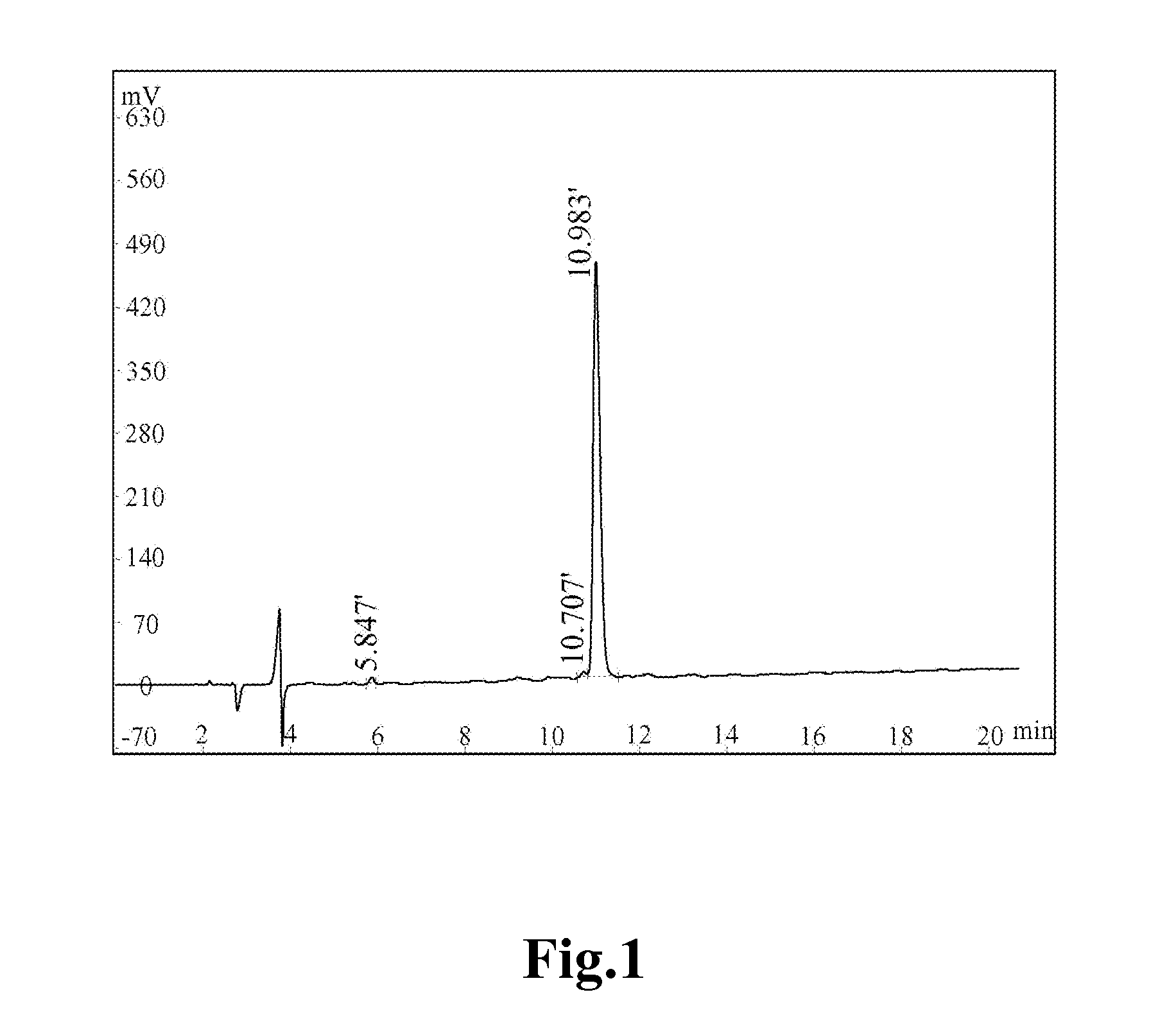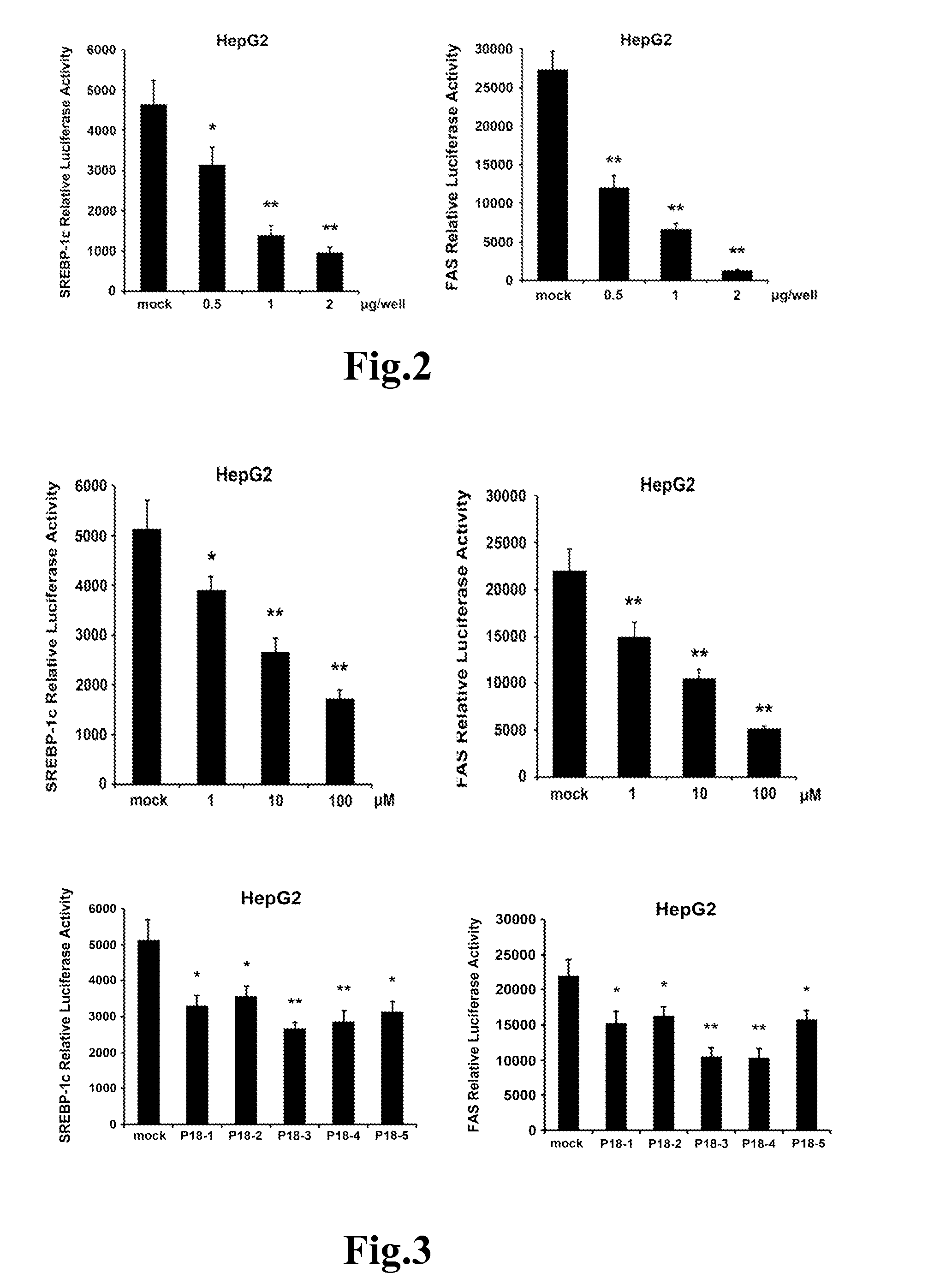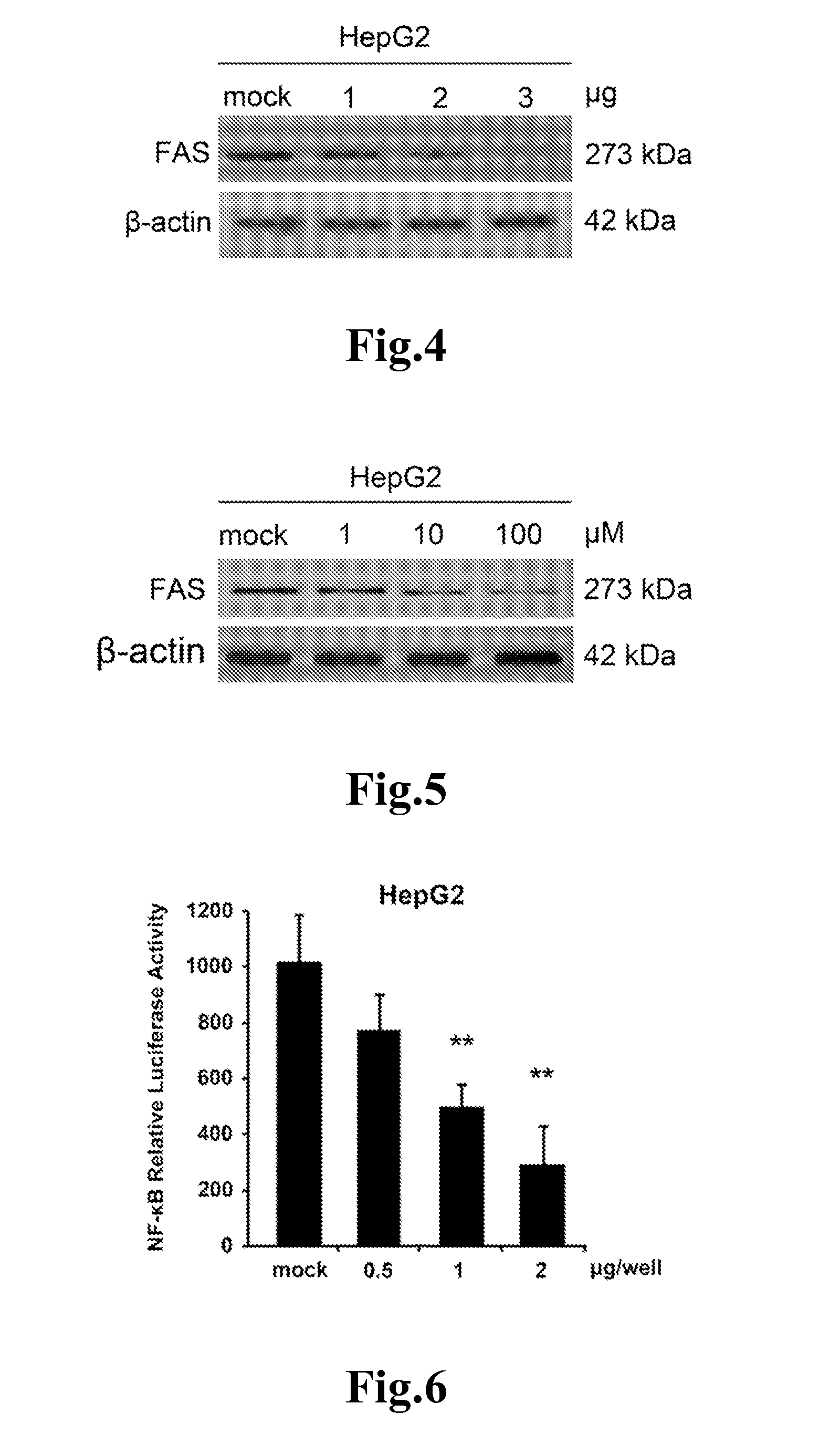Anti-fatty acid synthase polypeptide and use thereof
a polypeptide and anti-fatty acid technology, applied in the field of polypeptide medicine, to achieve the effect of inhibiting the transcription and expression of fas gene, and inhibiting the expression level of fas protein
- Summary
- Abstract
- Description
- Claims
- Application Information
AI Technical Summary
Benefits of technology
Problems solved by technology
Method used
Image
Examples
example 1
Design and Preparation of Polypeptides
[0087]Artificial synthesis of the fragment of polypeptides anti-FAS-P18:
[0088]The polypeptides having the amino acid sequence Gly-Gly-Cys-Arg-His-Lys-Leu-Val-Cys-Ala-Pro-Ala-Pro-Cys-Asn-Phe-Phe-Thr (SEQ ID NO: 1) (hereafter called Anti-FAS-P18) are synthesized by artificial synthetic methods. The polypeptide was prepared through solid phase peptide synthesis method, and was carried out on the Apex396 Peptide Synthesizer produced by AAPPTEC Company; the synthesis was performed in accordance with the sequence of SEQ ID NO: 1, from C-terminus carboxyl terminal to N-terminus amino terminal, to synthesize the amino acid in the sealed explosion-proof glass reactor. This refers to that the first amino acid monomer added into the amino acid sequence of Gly-Gly-Cys-Arg-His-Lys-Leu-Val-Cys-Ala-Pro-Ala-Pro-Cys-Asn-Phe-Phe-Thr was Thr in the C-terminus, followed by Phe, and then Phe, until the last Gly was added in the N-terminus. The resulting peptide was ...
example 2
The Anti-FAS Activities of Polypeptides (In Vitro)
[0095]Two methods were used to test the anti-FAS activities of the polypeptides in the Example 1 in vitro. One was that the cDNA expressed the polypeptides in the Example 1 was constructed into the eukaryotic expression vector pcDNA3.1(+) by molecular cloning technique, and then transfected into hepatoma cells to study the peptides, so as to observe the effects of studied polypeptides on inhibiting the FAS. The other one was that directly adding the synthesized polypeptides into the medium of cultured hepatoma cells, and then observe the effects of polypeptides on inhibiting the FAS.
[0096]Hepatoma cell line HepG2 was adopted in the experiment. Because SREBP-1c is upstream transcription regulatory factor of FAS, whether there is inhibition of SREBP-1c promoter activity at the molecular level can be used to reflect the transcription state of FAS gene by reporter gene assays. Meanwhile, the detection of FAS promoter activity can directl...
example 3
The Anti-FAS Activities of Polypeptides In Vivo
[0190]Suspended the HepG2 cells at exponential phase by treating with trypsin, and counted the number of cells to dilute to 1×107 cells / ml with physiological saline, and then store in the ice water. 12 Mice used were 4- to 6-week-old BALB / C females, and were randomly divided into two groups: {circle around (1)} Control group, injected 0.2 ml diluted cells to the armpit of left forelimb for each mouse, and only injected 0.5 ml ddH2O (without polypeptide drugs); {circle around (2)} experimental group (the treatment dose was 10 mg / kg), injected 0.2 ml diluted cells to the armpit of left forelimb for each mouse, and within 7 days after the injection, tumor volume (V=L×W2×0.5) reached to 100 mm3. And then, injected the above mentioned polypeptide drugs (dried polypeptide drug solved in 0.5 ml ddH2O) once in two day, total 10 times, and recorded the tumor volume before injection. Within 24 hr after the last dose, weighted the mice, and killed...
PUM
| Property | Measurement | Unit |
|---|---|---|
| pH | aaaaa | aaaaa |
| concentration | aaaaa | aaaaa |
| blood pressure | aaaaa | aaaaa |
Abstract
Description
Claims
Application Information
 Login to View More
Login to View More - R&D
- Intellectual Property
- Life Sciences
- Materials
- Tech Scout
- Unparalleled Data Quality
- Higher Quality Content
- 60% Fewer Hallucinations
Browse by: Latest US Patents, China's latest patents, Technical Efficacy Thesaurus, Application Domain, Technology Topic, Popular Technical Reports.
© 2025 PatSnap. All rights reserved.Legal|Privacy policy|Modern Slavery Act Transparency Statement|Sitemap|About US| Contact US: help@patsnap.com



